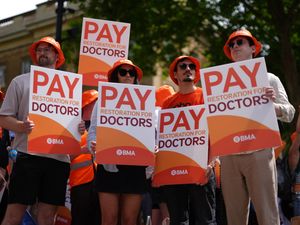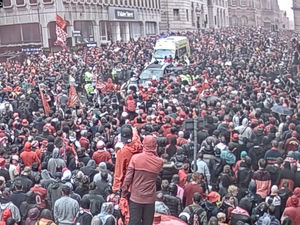Demba Diop stadium disaster - a tragedy we must avoid
When you talk about passion – nothing takes you closer than Senegalese feelings for football.
Find any undeveloped square acre in any city, town or village and you will find people, young and old, with a ball.
While dressed in rags and playing on dry mud, these footballers may not look the part, but they treat every touch, pass, shot as it is on their life.
This is one big, aggravating factor behind last weekend’s tragedy in Dakar when eight people lost their lives.
During the half-way point of extra time in a cup final match between two city rival teams fighting started on the terraces.
Police had kept the two groups of supporters 10 metres apart in a stand at the Stadium Demba Diop, but when missiles started to be thrown, they fled.
It left the rival supporters free reign to charge at each other – all in view of the stunned footballers who had stopped below.
The stampede of people resulted in a wall collapsing and eight people losing their lives. Sixty people were injured.
Raw passion is in abundance in African football, but in this instance it overspilled terribly.
Nine months ago I visited this stadium. It was built in 1963, named after the soon-to-be assassinated Mayor of M’Bour, a town south of the city, Demba Diop.
Huge concrete blocks made up 30,000 capacity venue, which was showing every year of its age.
Rusty fencing separated supporters from the pitch and crumbling walls surrounded the site.
I was able to walk inside, stopping for a chat with the caretaker before heading to the top of one of the stands to take some photographs.
Although impressed by this massive structure which overshadowed the shanty town around it, today, looking back, I’m less than shocked by what took place.
Watching grainy YouTube footage of the match between Stade de Mbour and US Ouakam, you can watch horrific incident unravel.
The throwing of bottles, the police dispersing, the supporters charging like ants at one another, then the tear gas flaring into the sky.
Broadcasters then sensibly stop the coverage.
It reminds us all of the importance of segregation, safe stadiums and organised policing.
Terraces were banned from major football grounds in England following the Taylro report in the wake of the Hillsborough disaster.
While generally a safe and cheap way to watch football, they also become the focus of visiting fans who would attempt to take the terrace of the home supporters.
It led to violence in the 1970s, resulting in crowd segregation at football grounds with high fencing put up on many terraces.
However, it was such fenced pens which were a factor in the death of 96 Liverpool fans at Hillsborough.
Today, some clubs, including Shrewsbury Town, are looking at bringing in standing areas dubbed ‘safe standing’ areas.
But while progress is being made toward the standing areas, this latest incident in Senegal should remind people of the dangers involved.





